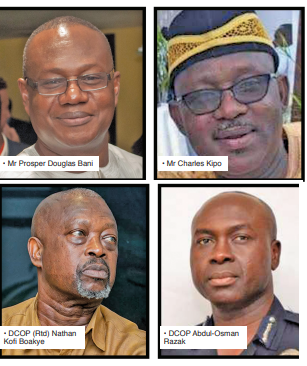Half a kilometre down a mine some 150km north of the article circle, Sweden’s centre-right energy and industry minister Ebba Busch holds up a large rock of iron ore.
“This is the site of the most modern underground iron ore mine in the world,” she tells a group of reporters on Thursday (12 January).
-
Kiruna church will be moved to a new location in 2025 (Photo: EUobserver)
For Busch, and by a wider extent the Swedish EU presidency, the mine located at Kiruna in northern Sweden, has the potential to lead Europe in the green transition, reduce its carbon footprint, and boost competitiveness.
“Critical minerals are essential for this transition. And rare earth elements are needed for all electric vehicles,” said Busch.
It is also a means to ween Europe off rare earth metals and iron ore import dependency on China and elsewhere, she said, noting that China accounts for approximately 70 percent of the world’s production of metals needed to facilitate the green transition.
Billed as the world’s largest underground iron ore mine, LKAB, a state-owned company which runs it, is making big promises to supply Europe and the wider world with raw materials needed to produce everything from electric vehicles to wind turbines.
The mine has some 4bn tonnes of minerals in reserve, forcing the nearby town of Kiruna and its inhabitants to pick up and move some 3km east in a process that will take years.
On Thursday, LKAB’s president and CEO Jan Mostrom, announced they had found an additional one million tonnes of rare earth oxides, the largest known deposit in Europe, at a nearby location called Per Geijer.
Mostrom said the discovery is “totally vital for our transformation from combustion engines to electric engines” as the sale of electric cars in Europe is expected to increase. But he also said it could take between 10 to 15 years before mining begins given the complexity of obtaining permits.
For the inhabitants of Kiruna, the mine is a troubled lifeline that dominates the surrounding landscape and one that also poses a problem for traditional herding of reindeer by the region’s Sami indigenous population. The Sami say they will be forced to give up land and traditions handed down by their ancestors.
Some 23,000 people live in around 50 villages covering a municipal area equivalent in size to Slovenia.
A winter night can drop to minus 40 celsius. But its night sky can also offer a dramatic spectacle of the northern lights, often coloured in green. In summer and for 50 days, the sun never drops below the horizon.
Founded in the early 1900s, the old town is being demolished and rebuilt to make way for the expansion of a mine that pays some of the largest salaries in Sweden.
But cracks, given the underground mining operations, are already forming in some of the buildings, including a hospital and a now empty public school, said one local.
It means a demolition of homes and buildings is under way with a new more modern city centre already constructed, financed by the mine, including a swimming pool, a pedestrian shopping street, and a large Scandic hotel.
The first homes were demolished in 2014 with others facing the mine in shambles.
Some 40 buildings have already been moved to a new location, as homes and apartments are relocated or rebuilt.
Locals appear to have accepted the fate as a necessary evil to keep the mine operational and growing. Among the more trickier moves is its beloved 600 tonne large wooden church and bell-tower, perched on top of a hill.
“We used to say that this church is like the living room in Kiruna,” said the church’s vicar Lena Tjarnberg. Tjarnberg said she supported the church’s relocation, noting that it will find a new home near the cemetery.





















Discussion about this post